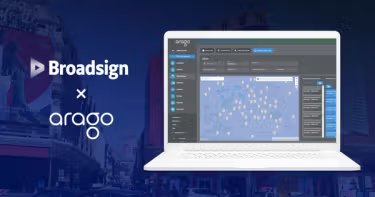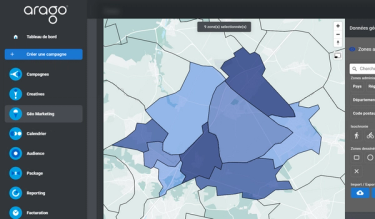
WHAT FUTURE FOR ADVERTISING IN A COOKIELESS WORLD?
In January 2024, third-party cookies will disappear from the web. For 85% of communications professionals*, this upheaval is considered one of the most important challenges of the moment. To better understand the ins and outs of this crucial issue, here is an overview of the reasons for an announced disappearance and the existing alternatives for today and tomorrow.
What is a cookie?
The cookie is a file with an alphanumeric code deposited by a web server on a browser in order to identify it.
There are two kinds of cookies:
- first party cookies which can only be deposited and read by the website consulted by the internet user,
- third-party cookies which allow publishers and SSP (Supply Side platforms) to offer external partners the opportunity to use their spaces. It is these third-party cookies that are likely to disappear in the medium term.
What is a third-party cookie used for?
Cookies therefore allow an advertiser to measure the audience of a website by counting "unique visitors", counting impressions, clicks or recognizing a user in order to decide whether or not to expose him to a campaign.
The third-party cookie also makes it possible to conduct "user-centric" campaigns: follow the path of an Internet user by targeting an Internet user in view of the sites they frequent, and by re-signing him after he has consulted an e-commerce site.
The limits of the cookie
Since their advent, cookies have been controversial because of their intrusive nature. In addition to this ethical aspect, the cookie is also energy-intensive : adding cookies to RTB (real time bidding) requests increases the burden of ad exchange exchanges and consumes additional energy. Therefore, for the end user, it is a waste of time by increasing the load time of a page.
Today, faced with the multiplication of devices and web browsers used by the same person, its identification is becoming more and more difficult and requires setting up cookie matching systems.This "cross platform" or "cross device" tracking technology further burdens the process.
Third-party cookies therefore have obvious problems: inefficiency in the movement of data, lack of ethical transparency? Little by little the cookie system has become out-dated. Changing the model quickly is both a necessity and an opportunity.
The End of Third-Party Cookies: The Meaning of History
In this context, consumers are increasingly distrusting cookies: about a third of French Internet users now use an adblocker.
In Europe, the new GDPR legislation stipulates that the processing of personal data must now require the consent of the data subject. Other states in the world (Brazil, California, Thailand) have taken similar measures.
The web industry has taken note of this fact : the main browsers (Firefox, Internet Explorer, Safari) have gradually integrated features aimed at reducing the effectiveness of third-party cookies. Even Google, whose activity is largely based on targeted advertising, ended up announcing its commitment to third-party post-cookie by opening in 2022 a "sandbox" with the aim of testing different technologies in this direction.
Tomorrow's strategies to replace cookies: optimizing contextual targeting...
Contextual targeting can be an effective alternative to cookies. Rather than tracking a user's history via cookies, the advertising industry would do well to better work on the personalization of creations according to the context of reading and the site / app visited. Breaking with the user-centric models of Google or Facebook, it will now be a question of better targeting the contextual location where an advertisement appears rather than the individual who receives it, basing on the core topics of the page's editorial content. Using machine learning, we can associate an anonymous Internet user with a qualified audience.
... and individual or cohort identification
As the IAB explains in a recent study, "the programmed end of third-party cookies does not mean the end of individual identifiers and the advertising industry is currently working on different avenues, making it possible to identify an individual and send him personalized advertising". Thus, individual or cohort identification systems (an anonymized group but with socio-data) will offer tomorrow an effective and ethical alternative to third-party cookies.
Arago, a cookieless solution from the outset
Right from the start of its development in 2009, the ARAGO DSP was designed for less intrusive targeting without third-party cookies. The technology favors targeting by center of interest and personalization of creatives according to reading context and site, rather than Google's targeted audiences and Facebook's socio-demo targeting. An ethical option that has proven to be in the direction of history.
*according to Integral Ad Science 2021

Programmatic Advertising: A Revolution for Trade Marketing
read
ARAGO the first programmatic platform connected to all DOOH inventories worldwide
read
Oui Pub, an opportunity for retail network communication
read
Why use a SaaS platform for all local communication needs?
read
ARAGO Teams Up with @Broadsign
read
ARAGO Teams Up with Broadsign to Bridge DOOH & Digital Ad Transactions
read
ARAGO Teams Up with Broadsign to Bridge DOOH and Digital Ad Transactions
read
Multi-local and multi-channel communication : a new key issue for organizations with multiple locations
read